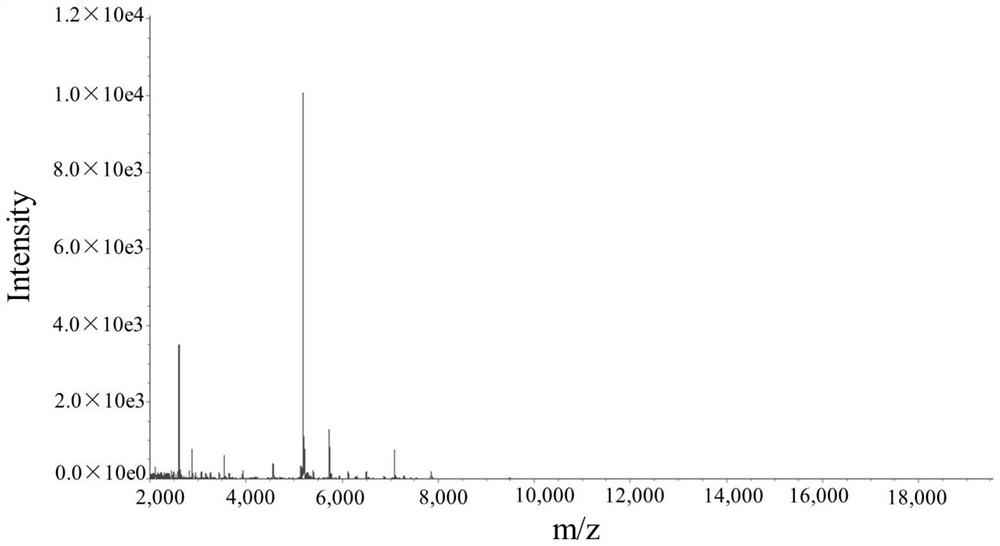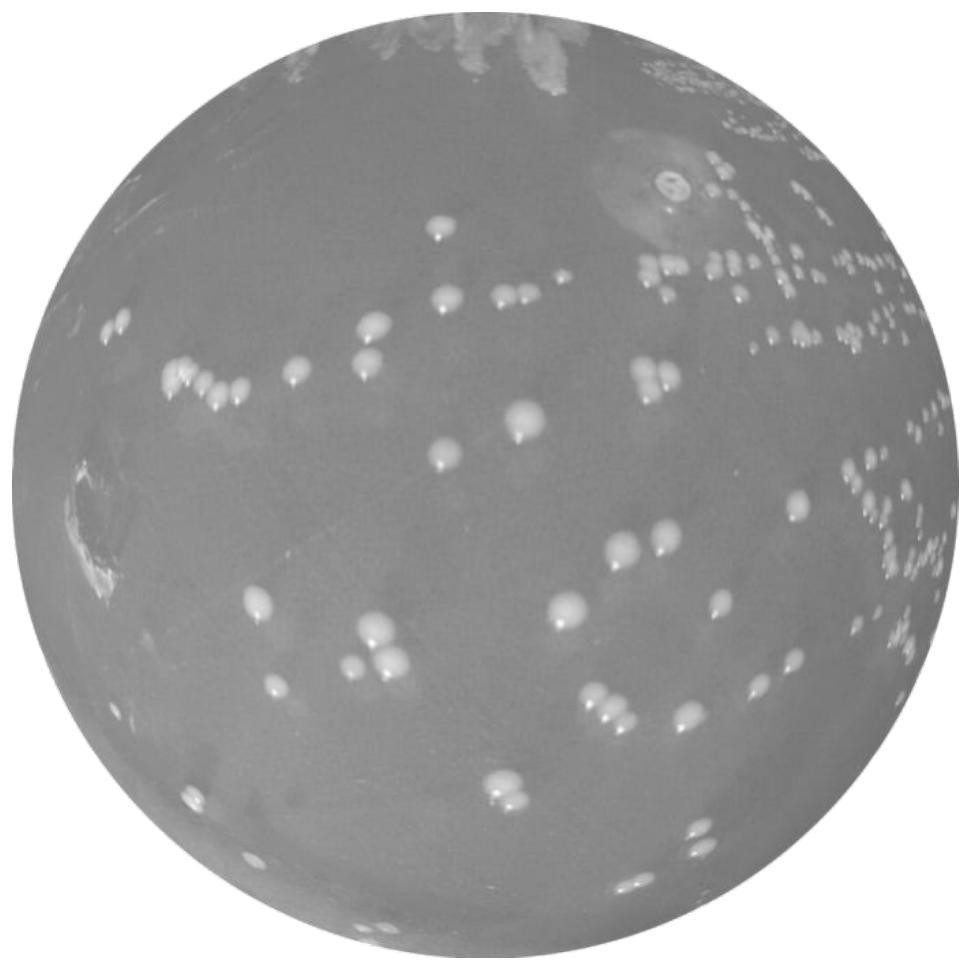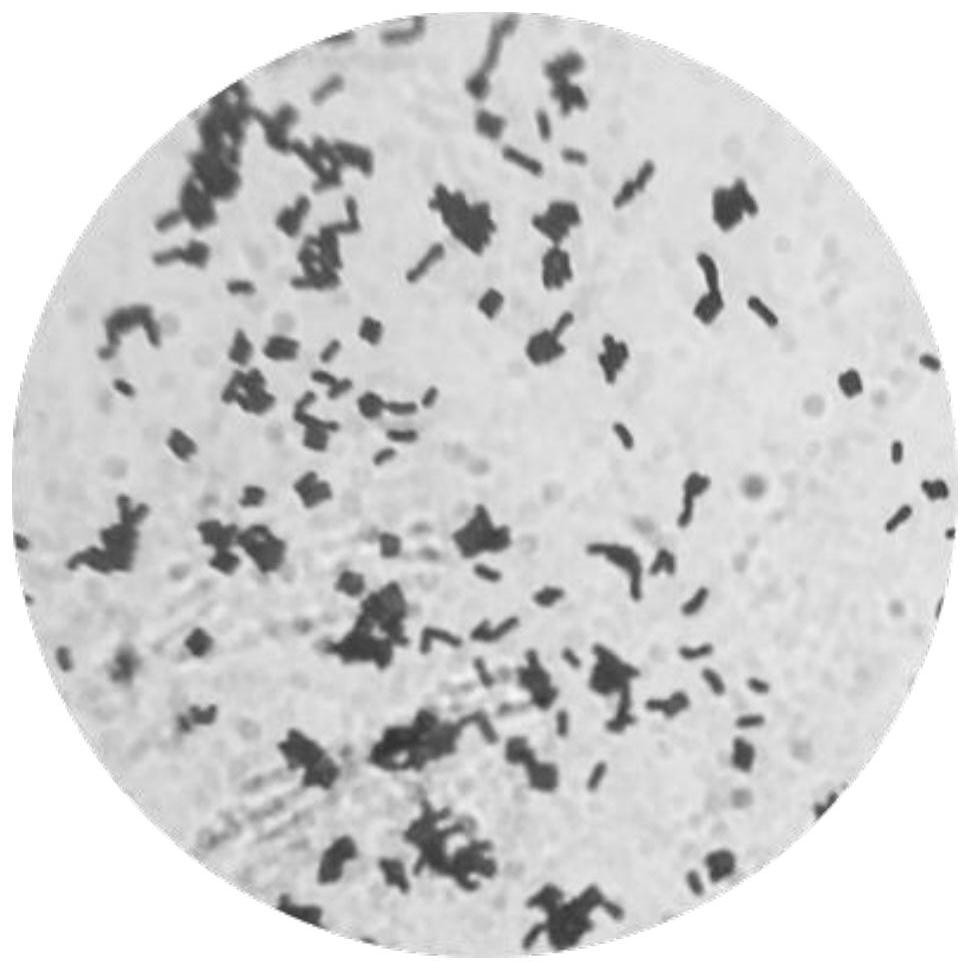Lactobacillus plantarum NX-1 and application thereof in preparation of hypoglycemic drugs
A technology for Lactobacillus plantarum and hypoglycemia, applied in the field of microorganisms, can solve problems such as not necessarily suitable, lack of scientific research evidence for the function of probiotics, lack of functional strains, etc., and achieve the effect of reducing glucose content
- Summary
- Abstract
- Description
- Claims
- Application Information
AI Technical Summary
Problems solved by technology
Method used
Image
Examples
Embodiment 1
[0026] Example 1 Isolation, Identification and Preservation of Novel Lactobacillus plantarum NX-1
[0027] (1) Separation: After gradient dilution of the spicy cabbage fermentation liquid, inoculate them in TPY solid medium, MRS solid medium and BDS solid medium respectively, culture anaerobically at 37°C for 48 hours, pick a single colony on the plate and streak Pure colonies were isolated. The pure colonies on the plate were inoculated into MRS liquid medium, cultured anaerobically at 37°C for 12-16h, added 20% glycerol, and stored in a -80°C refrigerator.
[0028] (2) Morphological identification of bacterial strains: Gram-stained strains were observed under a microscope, Gram-positive bacteria were purple, and Gram-negative bacteria were red.
[0029] (3) Molecular biological identification of the strain: Genomic DNA was extracted from the obtained strain, and the full-length 16S rDNA fragment was amplified by PCR technology using 16S rDNA universal primers 27F and 1492R,...
Embodiment 2
[0035] The preparation of embodiment 2 novel Lactobacillus plantarum NX-1 fermentation supernatant (extracellular secretion), bacterium suspension (thalline), cell disruption supernatant (intracellular substance)
[0036] The new Lactobacillus plantarum NX-1 was activated and cultured and inoculated in MRS liquid medium. After culturing at 37°C for 15 hours, the concentration of fermentation bacteria was adjusted to 10 9 CFU / mL, centrifuged at 4°C, 6000r / min for 10min to obtain the culture supernatant and cell pellet, the supernatant was filtered through a 0.22μm filter membrane to obtain the fermentation supernatant (extracellular secretion); the cell pellet was filtered through PBS twice After the first wash, the cells were resuspended with PBS, and the cell concentration was adjusted to 10 9 CFU / mL obtains bacterial suspension (thalline); Wash and resuspend concentration to be 10 9 The CFU / mL bacterial suspension was treated in an ice bath with an ultrasonic breaker, worki...
Embodiment 3
[0037] Example 3 Analysis of the inhibitory ability of novel Lactobacillus plantarum NX-1 to α-glucosidase activity
[0038] Mix 100 μL of 1 U / mL α-glucosidase (0.1M PBS, pH 6.8) with 50 μL of samples (non-inactivated and inactivated: fermentation supernatant, bacterial suspension, cell lysate supernatant) in 1.5 mL in a centrifuge tube. After pre-incubation for 10 min in a water bath at 37° C., 50 μL of 5 mM p-nitrophenyl-α-D-glucopyranoside (pNPG, 0.1 M PBS, pH 6.8) was added as a substrate. The enzymatic reaction was carried out in a water bath at 37°C for 30 min, and by adding 1 mL of 0.1M Na 2 CO 3 (distilled water) to terminate the reaction. 200 μL of the reaction solution was placed in a 96-well cell culture plate, and the α-glucosidase activity was determined by measuring the release of p-nitrophenol from pNPG at 405 nm. The solvent without sample was used as a control, the solvent without substrate was used as a blank, and acarbose was used as a positive control. ...
PUM
 Login to View More
Login to View More Abstract
Description
Claims
Application Information
 Login to View More
Login to View More - R&D
- Intellectual Property
- Life Sciences
- Materials
- Tech Scout
- Unparalleled Data Quality
- Higher Quality Content
- 60% Fewer Hallucinations
Browse by: Latest US Patents, China's latest patents, Technical Efficacy Thesaurus, Application Domain, Technology Topic, Popular Technical Reports.
© 2025 PatSnap. All rights reserved.Legal|Privacy policy|Modern Slavery Act Transparency Statement|Sitemap|About US| Contact US: help@patsnap.com



